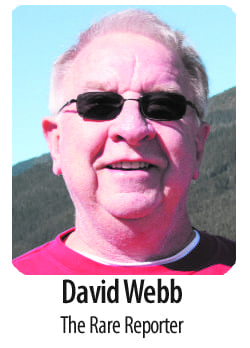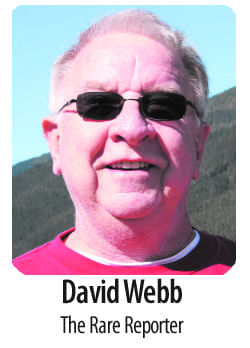A look at the earliest roots of the LGBT equality movement in the U.S., and the evolution of Pride

Left: The first gay Pride parades were held in June 1970 in New York (pictured), Chicago, San Francisco and Los Angeles. Dallas’ first Pride parade was downtown in 1972. Middle: Harry Hay, left, brushes the cheek of his partner, John Burnside, at their San Francisco home in July 2002, at their home in San Francisco. Hay, who founded The Mattachine Society, died in October 2002 at the age of 90. (Ben Margot/Associated Press) Right: Lifelong partners Phyllis Lyon, left, and Del Martin founded the Daughters of Bilitis. The two women became the first same-sex couple to be legally married in California in June 2008, shortly before Lyon’s death in August that same year. They had been together 55 years.
Dallas’ LGBT community will celebrate the 2016 Alan Ross Texas Freedom Parade on Sunday afternoon, Sept. 18, marking the commemoration of New York City’s Stonewall Riots in June 1969 and a special moment in Texas’ gay legal history. Most people view the spontaneous riots as the birth of the modern-day gay rights movement, but that’s not the whole story.
The three days of riots that took place at the Stonewall Inn beginning June 28, 1969, in Greenwich Village — when New York City police officers attempted to raid the club frequented by drag queens, male hustlers and butch lesbians — represented a turning point in the gay rights battle, but not the beginning. The melee that shocked police officers and sent them scurrying for backup followed years of advocacy by early pioneers of social change in the United States and the rest of the world.
 In 1924, the nation’s first gay rights group, The Society for Human Rights, formed in Chicago, the major city in the first state to strike down a sodomy law (in 1962). The first national gay rights group, the Mattachine Society, was organized by Harry Hay in 1951 in Los Angeles. Hay, who was also a communist activist, was largely inspired by Alfred Kinsey’s publication in 1948 of Sexual Behavior in the Human Male, which revealed homosexuality to be far more widespread than society previously understood.
In 1924, the nation’s first gay rights group, The Society for Human Rights, formed in Chicago, the major city in the first state to strike down a sodomy law (in 1962). The first national gay rights group, the Mattachine Society, was organized by Harry Hay in 1951 in Los Angeles. Hay, who was also a communist activist, was largely inspired by Alfred Kinsey’s publication in 1948 of Sexual Behavior in the Human Male, which revealed homosexuality to be far more widespread than society previously understood.Lesbians also entered the picture in the 1950s with the formation of the Daughters of Bilitis in San Francisco, followed by a national organization of the same name in 1956. In 1966, the National Transsexual Counseling Unit in San Francisco became the first transgender organization in the world.
Gay activists in Europe and other countries simultaneously formed groups and sought changes, making it a worldwide effort that progressed steadily and solidly before it exploded in the 1970s.
U.S. gay activists in the 1950s and 1960s, who favored the term “homophile” rather than “homosexual” to describe their organizations, often advocated assimilation into mainstream society through educational efforts directed at both heterosexuals and homosexuals. Facing an anti-gay legal system, they sought non-confrontational strategies before the volatile social and political movements of the late 1960s, including the anti-Vietnam War protests, began influencing the LGBT community and its leaders as well. Many of the early gay activists participated in the movements for equality for ethnic groups and women, including the issue of reproductive rights.
Sociologists speculate that the massive worldwide push for social change and the liberal environment of Greenwich Village, San Francisco and Hollywood created hotbeds that took public officials by surprise. Prior to the Stonewall riots, LGBT people put up little resistance to oppression from police that flourished everywhere.
As word of the Stonewall Riots spread across the United States and around the world in 1969, thanks to international news agencies, it sparked amusement among many readers and horror among some older LGBT community members in conservative areas — like Dallas — who feared reprisals from local police officers. At the same time, it inspired admiration and unrest among younger LGBT people, and within two years gay rights groups existed in every major U.S. city, as well as Canada, Europe and Australia.
In November of 1969 the Eastern Regional Conference of Homophile Organizations met in Philadelphia and proposed the first gay Pride parade, to be held in New York City to commemorate the Stonewall Riots. Activists at the meeting pledged to encourage other LGBT communities across the nation to also stage parades, and they coined the term “Pride.” Bisexual activist Brenda Howard became known as the “Mother of Pride” for coordinating the parade and proposing a week of celebratory events to enhance the march.
The first Pride parades were held June 27, 1970 in Chicago and the next day, June 28, in New York City, San Francisco and Los Angeles. Many of the marches proclaimed “Gay Liberation Day” and “Gay Freedom Day” before they evolved into the universal “Gay Pride Day” in the 1980s.
Another pivotal movement occurred in 1973 when the American Psychiatric Association removed homosexuality from its official list of mental disorders, reversing its classification in “Diagnostic and Statistical Manual” in 1952 as a mental disorder. Gay groups across the United States banded together and stressed the importance of that determination to counteract resistance by opponents such as conservative religious leaders and bigots like celebrity singer Anita Bryant, who led a fight against LGBT equality in Florida.
Today, Pride parades take place in countless cities worldwide. Most are held in June to commemorate the Stonewall Riots. Dallas holds its parade in September to celebrate federal Judge Jerry Buchmeyer’s condemnation of the sodomy law as unconstitutional and also to take advantage of cooler weather in addition to recognizing the importance of the riots.
Dallas’ first gay parade took place in 1972, three years after he Stonewall Riots, in downtown Dallas. It attracted several hundred people. The next one was not staged until 1980, and the annual parade — now named for longtime Dallas Tavern Guilde Executive Director and parade coordinator Allan Ross — takes place in Oak Lawn where most of the city’s gay and lesbian bars operate. It attracts tens of thousands of spectators.
The Stonewall Riots gave a boost to a civil rights movement that was well underway in 1969 but struggling to gain the sort of widespread attention and support needed to change minds and hearts in large enough numbers to make a difference That summer night in New York City, the most marginalized members of the early LGBT community changed the course of history.
This article appeared in the Dallas Voice print edition September 16, 2016.

